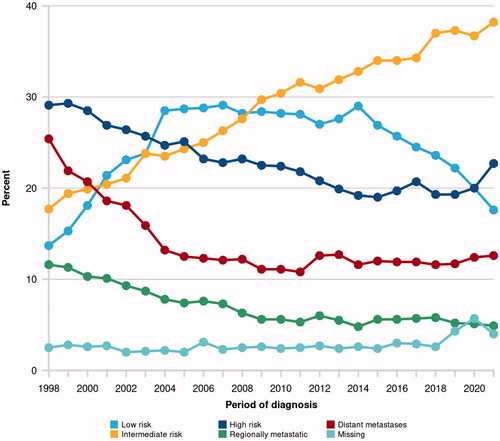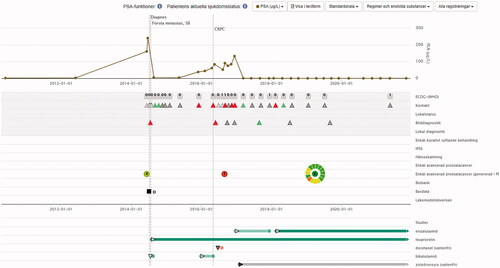Figures & data
Figure 1. The proportional distribution of clinical risk groups at the time of prostate cancer diagnosis, as registered in the National Prostate Cancer Register of Sweden (NPCR, website npcr.se). Regionally metastatic disease is defined as clinical stage T4 and/or N1 and/or PSA 50–99 ng/ml in the absence of confirmed distant metastasis (i.e. disease categorised as M0 or MX).

Figure 2. An example of a view from Patient Overview Prostate Cancer. The graphic display gives an immediate apprehension of the progression of the disease, previous diagnostic investigations, previous and ongoing treatments, treatment responses, and the patient’s symptoms and quality-of-life, as registered in an online questionnaire before the appointment. The circle represents the answers to 15 symptom domains. The colour of the circle’s separate sectors is either green (no problems), yellow (moderate problems) or red (severe problems), which allows the physician to direct their attention to what bothers the patient most. The number in the middle of the circle represents overall quality-of-life, rated from 0 to 10.

